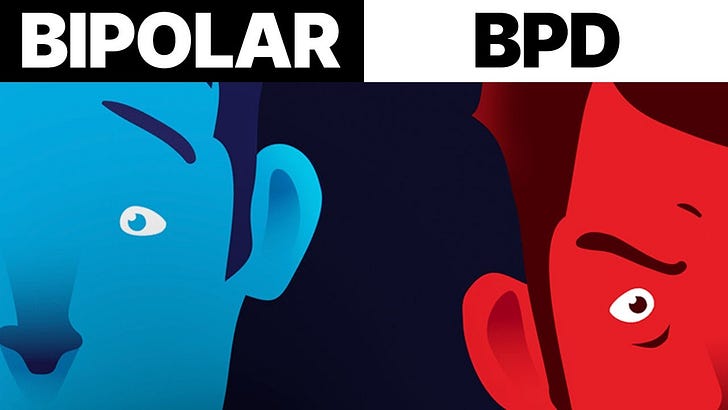Bipolar Vs BPD: Major Signs And How To Tell The Difference
Watch the full video here:
Definitions
• Bipolar Disorder involves intense mood shifts, from high energy to low mood and sadness. It is characterized by episodes of mania, followed by intense periods of depression. Mood swings are a prominent feature of Bipolar Disorder, lasting for extended periods and being particularly intense.
• Borderline Personality Disorder, or BPD, is characterized by unstable relationships, self-image, and emotions, which can often result in impulsive behaviors.
Differences: Relationships and Self-image
• Bipolar Disorder has complex aspects of relationships and self-image.
• During manic episodes, individuals may exhibit risky behaviors and increased energy levels, while maintaining a consistent sense of self.
• During depressive episodes, patients may experience withdrawal and difficulties in maintaining relationships due to the immense weight of sadness.
• Borderline Personality Disorder is characterized by consistently unstable relationships and self-image.
Treatment Approaches
• Pharmacological interventions have been found to be effective in treating Bipolar Disorder, especially mood stabilizers and medications that address mood episodes.
• Psychotherapy, such as cognitive-behavioral therapy, can be helpful in addressing the cognitive aspects of the disorder.
• Psychotherapeutic approaches have shown positive results in treating Borderline Personality Disorder, particularly dialectical behavior therapy.
• Treatment primarily focuses on addressing specific symptoms, such as depression or anxiety, and may be prescribed to assist with this process.
Triggers
• Mood episodes in Bipolar Disorder can often be triggered without a clear connection to specific external events.
• Individuals with Borderline Personality Disorder often experience intense emotional shifts that are commonly triggered by external events, especially conflicts in their relationships.
Challenges and Solutions
• Approaching these conditions with a compassionate and empathetic mindset is essential.
• Reaching out to a professional can be a brave and positive choice on the path to healing.




